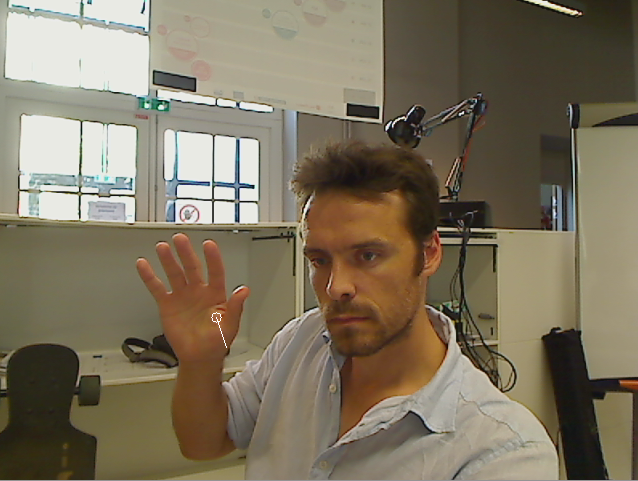Motion Detection¶
Is there anything moving in front of my object? Where exactly?
Getting Started¶
Using Angus python SDK:
# -*- coding: utf-8 -*-
import angus.client
from pprint import pprint
conn = angus.client.connect()
service = conn.services.get_service('motion_detection', version=1)
service.enable_session()
for i in range(200):
job = service.process({'image': open('./photo-{}.jpg'.format(i), 'rb')})
pprint(job.result)
service.disable_session()
Input¶
The API takes a stream of 2d still images as input, of format jpg or png, without constraints on resolution.
Note however that the bigger the resolution, the longer the API will take to process and give a result.
The function process() takes a dictionary as input formatted as follows:
{'image' : file}
image: a pythonFile Objectas returned for example byopen()or aStringIObuffer.
Output¶
Events will be pushed to your client following that format:
{
"input_size" : [480, 640],
"nb_targets": 1
"targets":
[
{
"mean_position" : [34, 54],
"mean_velocity" : [5, 10],
"confidence" : 45
}
]
}
input_size: width and height of the input image in pixels.mean_position:[pt.x, pt.y]whereptis the center of gravity of the moving pixels.mean_velocity:[v.x, v.y]wherevis the average velocity of the moving pixels.confidence: in[0,1]measures how significant the motion is (a function of the number of keypoints moving in the same direction).
Code Sample¶
requirements: opencv2, opencv2 python bindings
This code sample retrieves the stream of a web cam and display in a GUI the result of the motion_detection service.
# -*- coding: utf-8 -*-
import StringIO
import cv2
import numpy as np
import angus.client
def main(stream_index):
camera = cv2.VideoCapture(stream_index)
camera.set(cv2.cv.CV_CAP_PROP_FRAME_WIDTH, 640)
camera.set(cv2.cv.CV_CAP_PROP_FRAME_HEIGHT, 480)
camera.set(cv2.cv.CV_CAP_PROP_FPS, 10)
if not camera.isOpened():
print("Cannot open stream of index {}".format(stream_index))
exit(1)
print("Input stream is of resolution: {} x {}".format(camera.get(3), camera.get(4)))
conn = angus.client.connect()
service = conn.services.get_service("motion_detection", 1)
service.enable_session()
while camera.isOpened():
ret, frame = camera.read()
if not ret:
break
gray = cv2.cvtColor(frame, cv2.COLOR_BGR2GRAY)
ret, buff = cv2.imencode(".jpg", gray, [cv2.IMWRITE_JPEG_QUALITY, 80])
buff = StringIO.StringIO(np.array(buff).tostring())
job = service.process({"image": buff})
res = job.result
for target in res['targets']:
x, y = map(int, target['mean_position'])
vx, vy = map(int, target['mean_velocity'])
cv2.circle(frame, (x, y), 5, (255,255,255))
cv2.line(frame, (x, y), (x + vx, y + vy), (255,255,255))
cv2.imshow('original', frame)
if cv2.waitKey(1) & 0xFF == ord('q'):
break
service.disable_session()
camera.release()
cv2.destroyAllWindows()
if __name__ == '__main__':
### Web cam index might be different from 0 on your setup.
### To grab a given video file instead of the host computer cam, try:
### main("/path/to/myvideo.avi")
main(0)
